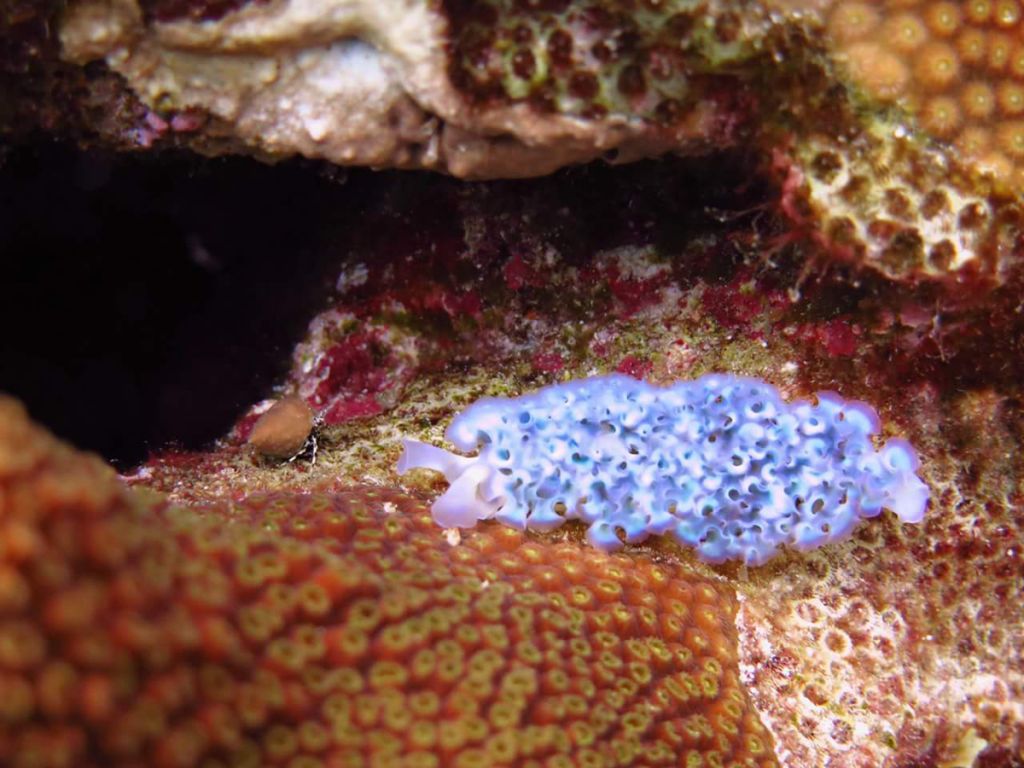Environmental DNA: Ground-truthing a new tool for coral reef monitoring
PRINCIPAL INVESTIGATOR: Peter Marko
Sea Grant Graduate Fellow: Patrick Nichols

Given the rapid pace of climate change, successful conservation relies on frequent, fast, and reliable monitoring of at-risk organisms and habitats. Most coral reef monitoring relies on time-consuming visual assessment by SCUBA and skin divers, which limits the number of sites, time spent at each site, and the frequency of site assessment. These limits create the need to develop new approaches that can be used to monitor more quickly, more often, and at more locations, to increase the likelihood of detecting early signals of decline, as well as recovery, in response to management actions.
The analysis of environmental DNA (eDNA) has the potential to revolutionize this kind of biological monitoring. eDNA is naturally shed by organisms into the environment and can be isolated and analyzed, typically from relatively small volumes of water, overcoming the logistical constraints associated with standard, in-water visual methods. But, before eDNA can be added to regular monitoring efforts in Hawai‘i, we need a clear understanding of the natural fluctuations in eDNA community profiles and the consistency with which they accurately measure the abundance and distribution of coral reef animals and plants.
Nearly all marine eDNA surveys focus on detecting organisms that live at or above the reef surface and whose DNA is abundant in water sampled immediately above the reef. However, surface-dwelling fish and corals account for only a small fraction of all reef species, whereas the organisms living hidden within reefs make up ~91 percent of known reef species, fulfilling important ecological processes. Yet, as climate change alters the most conspicuous surface coral reef organisms, we know nothing about the impacts on the understudied internal reef cryptobiome, how these organisms are affected by declines in fish and corals, and if the types of species inside a reef influences the rate at which the physical structure of a reef declines.
This study, in collaboration with the State of Hawai‘i’s Division of Aquatic Resources (DAR), will focus on two research objectives. First, we will rigorously examine the natural variability of eDNA by comparing coral eDNA profiles to visual data collected by DAR at reefs around O‘ahu, on monthly and weekly timescales for two years. These results will help answer the most fundamental questions about eDNA biomonitoring: where, when, and how often must eDNA be sampled to return reliable management-actionable information about reef health and biodiversity? Our second objective will be to characterize understudied internal cryptobiome reef communities using eDNA analysis of water pulled with syringes from internal reef spaces, sampling reefs that vary in total coral cover, a widely-used measure of coral reef health. This will generate the first targeted analysis of biodiversity within coral reefs, providing a window into the wider biological impacts of climate change. Together, these studies will provide the necessary information to plan, implement, and interpret eDNA surveys of coral reefs with the goal of providing improved analytical support to local agencies to monitor the impacts of climate change, overfishing, and management initiatives.

